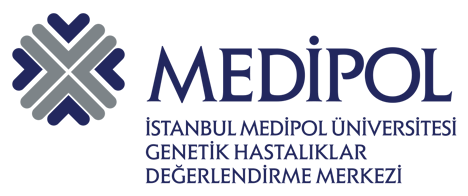Whole Exome Sequencing (WES)
What is the Whole Exome Sequencing (WES) test?
There are about 20 thousand genes in DNA. The protein-coding sequences of each gene are called exons. The sum of all exons on DNA is called exomes. Approximately 85% of human genetic diseases are caused by different kinds of changes in exon regions. Therefore, sequencing of these regions, which make up only about 1% of DNA, is of critical diagnostic importance. The resulting sequence is compared to the human reference exome sequence and each change that occurs is classified according to its virulence potential. Analyzes are made in accordance with the patient’s clinic.
What are Whole Exome Sequence Analysis indications?
Whole exome sequence analysis is recommended in many different indications. The following are at the top of them:
- Intellectual deficiencies of unknown cause
- Epilepsies of unknown etiology
- Autism Spectrum Disorders
- Neuropathies
- Herediter spastic paraparesis
- Multiple congenital anomalies
- Monogenic inflammatory bowel diseases
- Retinitis Pigmentosa (chicken black)
- Congenital deafness
- Behavioral disorders
For information on other indications, you can consult a Medical Genetic Specialist.
What are the advantages of the whole Exome Sequence Analysis test?
Although the diagnosis rates are different in each group, they vary between 30-80%. The WES test makes a serious contribution to the diagnosis of these diseases, many of which are rare. In addition, sequencing of exomes instead of sequencing disease-related genes individually provides a serious advantage in terms of time.
With the determination of the etiology of the disease, treatment possibilities should be re-evaluated. In addition, the possibility of recurrence of the disease in possible pregnancies of the family becomes clear.
What are the factors that increase the diagnosis rate?
Analyzes are made in line with clinical findings. Therefore, it is important to define clinical findings correctly. Imaging and laboratory tests must be completed in order to identify the anomalies present in the patient. Determining the inheritance model of the disease with the family tree are among the factors that facilitate the analysis.
Technical data such as the size of the study’s coverage area, reading depth, and up-to-date bioinformatics software are also factors affecting the rate of diagnosis. Analyzing index case studies together with other affected cases in the family, if necessary, or including their parents in the study when necessary, increases the rate of diagnosis. Other factors that increase the diagnosis rate are copy number change (CNV) analysis, which allows analysis of large deletions (loss) and large duplications (increase), and bioinformatics software that enables effective use of previous patient data.
Other Important Issues
It is important to provide the WES results with genetic counseling and, if necessary, to investigate the presence of the detected variants in other members of the family. The results must be evaluated together with the patient’s clinic. In cases that cannot be diagnosed, it is recommended to investigate the data obtained 1 year later in the light of current information or to refer the patient to whole genome analysis.
The importance of variants with uncertain clinical significance can be partially elucidated by the patient’s clinical findings and family studies. Although there are different applications, carriers that are incompatible with the clinic and incidental findings other than the recommendations of ACMG (American College of Medical Genetics) are not included in the reporting.

